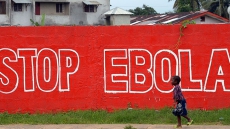In what could put an end to controversies surrounding admissibility of fingerprint evidence in courts of law, a study by an Indian-origin researcher has found that fingerprint pattern remains stable over time.
"We wanted to answer the question that has plagued law enforcement and forensic science for decades: Is fingerprint pattern persistent over time?" said Anil Jain, professor at the Michigan State University.
"With multilevel statistical modelling, fingerprint recognition accuracy remains stable over time," Jain, an alumnus of Indian Institute of Technology, (Kanpur) said.
Fingerprints have been used by law enforcement and forensics experts to successfully identify people for more than 100 years.
Though fingerprints are assumed to be infallible personal identifiers, there has been little scientific research to prove this claim to be true. As such, there have been repeated challenges to the admissibility of fingerprint evidence in courts of law.
The researchers used fingerprint records of 15,597 subjects apprehended multiple times by the Michigan State Police over a time span varying from five to 12 years.
The results said fingerprint recognition accuracy does not change even as the time between two fingerprints being compared increases.
Experts agree that Jain's research addresses one of the most fundamental issues in fingerprint identification and is of great importance to law enforcement and forensic science.
"This study is one of the fundamental pieces of research on a topic that has always been taken for granted. The permanence of fingerprints has not been systematically studied since the seminal work of Herschel was presented in Galton's book: Finger Prints (1892, Macmillian & Co.)," professor Christophe Champod from Universite de Lausanne, Switzerland, said.
"This study is a monumental achievement and one that will benefit forensic science teams worldwide," Captain Greg Michaud, director of the Forensic Science Division, Michigan State Police, said.
The research was published in the journal Proceedings of the National Academy of Sciences.





